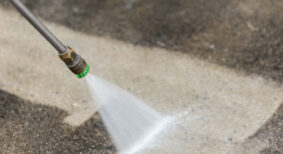Over the past three decades, asthma rates have surged in Canada. Characterized by variable and returning symptoms, such as shortness of breath, chest tightness, coughing and wheezing, the disease has become one of the most prevalent chronic conditions in the country, affecting more than three million Canadians, according to the Asthma Society of Canada.
Statistics like this has led many cleaning chemical manufacturers to introduce green products that tout low or no volatile organic compounds. Commonly known as VOCs, these chemicals have been linked to poor indoor air quality (IAQ) and the onset and exacerbation of asthma.
The replacement of traditional products with eco-friendly ones has pleased many in the cleaning industry; however, upon closer inspection, chemical cuts have primarily been made to ozone depleting VOCs. This benefits stratospheric ozone, which is six to 30 miles above the Earth’s surface and helps reduce the amount of harmful ultraviolet radiation that reaches the planet. Ambient ozone – the ozone people breathe – has been little impacted, so building occupants may still be inhaling VOCs and other chemical emissions that can trigger asthma.
Some claim this is greenwashing, which is the dissemination of disinformation by an organization to present an environmentally responsible public image. By definition, this appears to be the case. However, there is no evidence to support such a claim since cleaning chemical manufacturers are simply abiding by the instructions, standards and criteria set out and enforced by most green certification organizations. In other words, companies are following rules and guidelines that are not entirely correct. Many of the standards and criteria used to certify green cleaning products were developed as far back as the late ‘80s. At that time, it may not have been understood that ozone-depleting VOCs could be eliminated and that harmful VOCs and chemical emissions could still be found in indoor air.
Double Duty
Green certification organizations have played a role, albeit an indirect one, in the IAQ-VOC issue. As the number of certification organizations increased around the turn of the 21st century, the market for their services became overcrowded. In response, they became more specialized. For instance, Green Seal and EcoLogo, which is part of UL Environment, began to focus more on the cradle-to-grave sustainability of a product, whereas Safer Choice put more emphasis on identifying products with safer chemical ingredients. None at the time considered pursuing standards that addressed the interaction between IAQ and chemical emissions. As a result, most of the certification organizations shared the same criteria for VOCs, and newer guidelines weren’t created. Times have since changed and now Greenguard, also part of UL Environment, has begun to focus on emissions, such as VOCs, that can become airborne and impact IAQ.
But does this mean facility managers and cleaning professionals should only select Greenguard certified products if protecting IAQ is a critical concern?
The answer, quite simply, is no.
Rather, dual certification is ideal. This means the cleaning product has been approved by two certification organizations, not just one. If the green product carries both the EcoLogo and Greenguard logos, for instance, end-users can be assured that the harmful ingredients found in traditional cleaning products have been reduced or removed, and VOCs and chemical emissions are at levels proven safer, protecting the air people breathe.
Mike Sawchuk is chief business development officer for Avmor, a leading manufacturer and marketer of professional cleaning products in North America.








